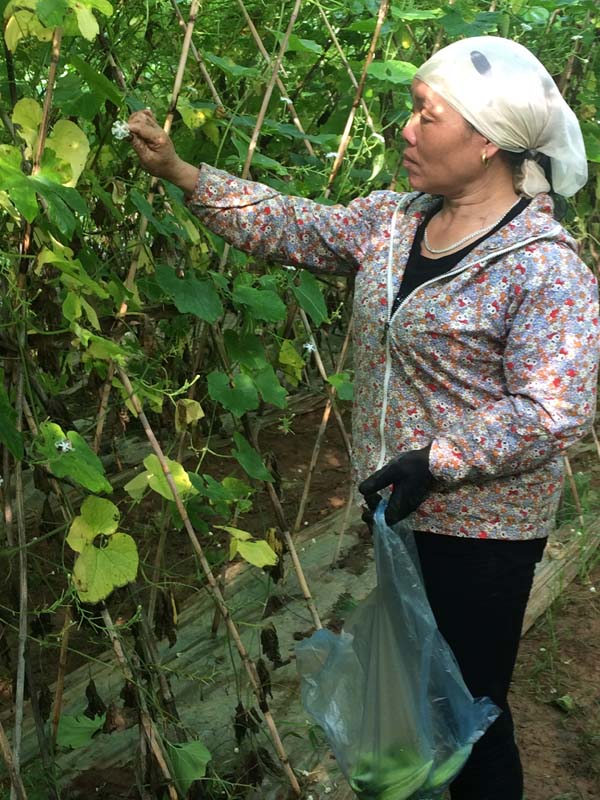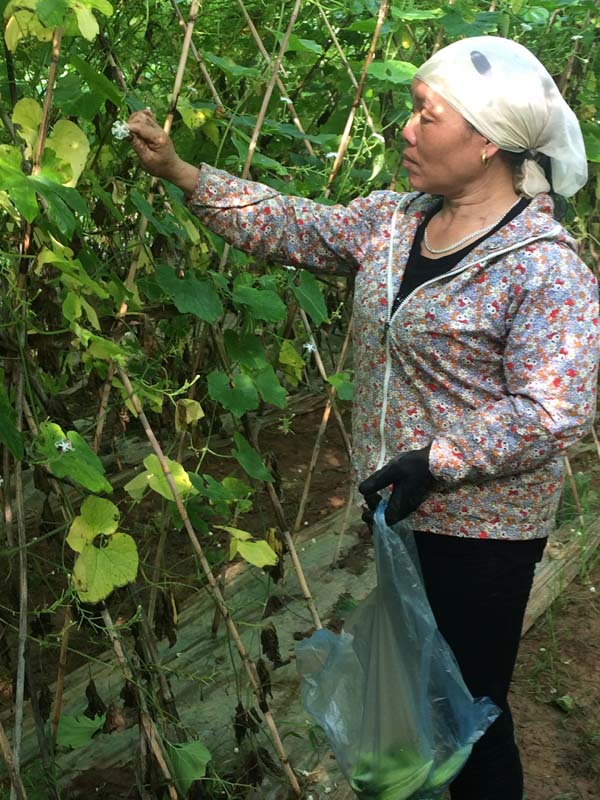
(HBO) – In recent years, farmers in Tong Dau commune in Mai Chau district have worked hard to switch to more suitable crops and animals, and to apply modern technologies in their farming practice for better output and productivity. Cardiopteris quinqueloba, a type of vine that gives small and tasty fruit, has gained significant attention from local authorities and residents. In the past, locals cultivated the vine for their daily meals. The fruit now has become popular and found its place in the market.
From over 2,000 square metres of cardiopteris
quinqueloba plantation, Vi Thi Cuong and her family in Cha Long hamlet, Tong
Dau commune, earn more than 200 million VND on an annual basis.
In 2017, Tong Dau planted nearly 2 hectares of cardiopteris quinqueloba. The
figure grew to 3 hectares one year later. Visiting Vi Thi Cuong’s garden of the
vine in Cha Long hamlet, we were amazed by its plantation and productivity.
Cuong’s family is cultivating cardiopteris quinqueloba on over 2,000 square
metres of land and earn an annual income of 250 million VND (10,700 USD).
The tasty fruit is in the market’s favour, bringing high
commercial values for the growers. Its retail prices range from 15,000 to 20,000
VND per kg, while the wholesale price is 15,000 VND per kg. Cha Long residents
said there are days when local households sold 2 – 3 tonnes of the fruit to
buyers from across the nation. Profit from the new business is between 2 and 3
times higher than that of rice and other vegetables.
Ha Van Doan, chairman of the Tong Dau farmers’ association, said:
"Cardiopteris quinqueloba is now a key plant in the hamlet. Ten years of
growing the vine have helped many families get rid of poverty and gain a better
life. The vince is easy to grow and suits the local soils and weather.
Requiring small investment and simple care, it has quickly drawn locals’
interest.”
The vine is often planted in March and can be harvested three
months later./.
According to data from the Hoa Binh Provincial Party Committee, the industrial production index for the first six months of 2025 is estimated to have increased by 20% compared to the same period last year. This marks the highest year-on-year growth rate for this period since 2020.
In the first six months of 2025, Hoa Binh province’s export turnover was estimated at 1.145 billion USD, marking an 18.11% increase compared to the same period in 2024. Import turnover was estimated at $ 804 million, a 17.15% increase, which helped the province maintain a positive trade balance.
The lives of the ethnic minority farmers in Tan Lac district have gradually improved thanks to the new directions in agricultural production. This is a testament to the collective strength fostered through the professional associations and groups implemented by various levels of the district’s Farmers’ Union.
With the motto the "product quality comes first,” after nearly one year of establishment and operation, Muong village’s Clean Food Agricultural and Commercial Cooperative, located in Cau Hamlet, Hung Son Commune (Kim Boi district), has launched reputable, high-quality agricultural products to the market that are well-received by consumers. The products such as Muong village’s pork sausage, salt-cured chicken, and salt-cured pork hocks have gradually carved out a place in the market and they are on the path to obtaining the OCOP certification.
In the past, the phrase "bumper harvest, rock-bottom prices" was a familiar refrain for Vietnamese farmers engaged in fragmented, small-scale agriculture. But today, a new spirit is emerging across rural areas of Hoa Binh province - one of collaboration, organisation, and collective economic models that provide a stable foundation for production.
Maintaining growing area codes and packing facility codes in accordance with regulations is a mandatory requirement for agricultural products to be eligible for export. Recently, the Department of Agriculture and Environment of Hoa Binh province has intensified technical supervision of designated farming areas and packing facilities to safeguard the "green passport" that enables its products to access international markets.



